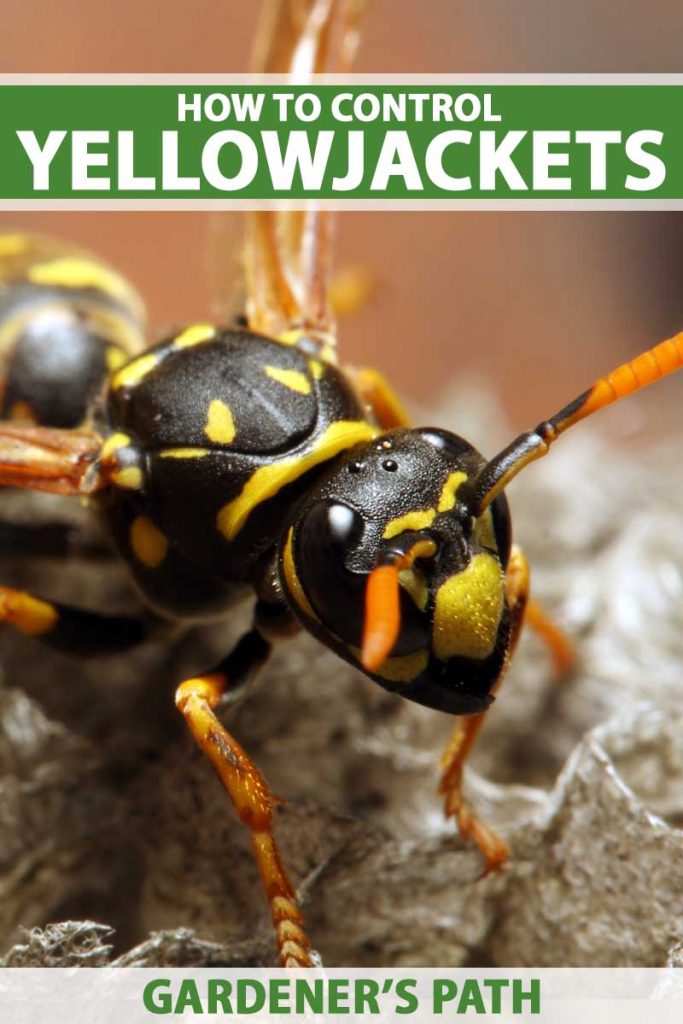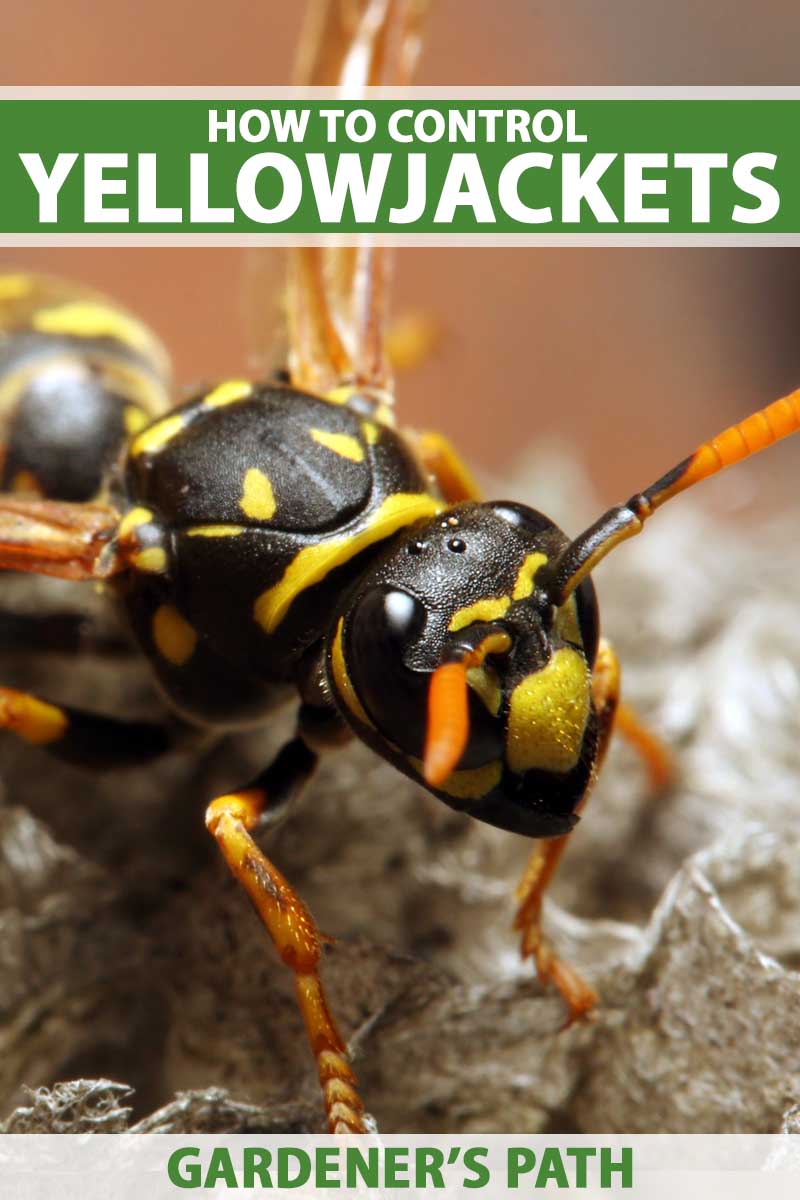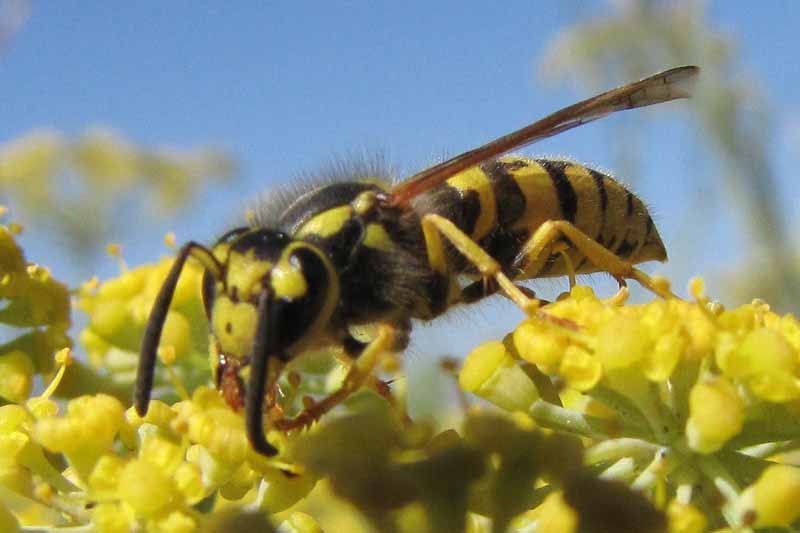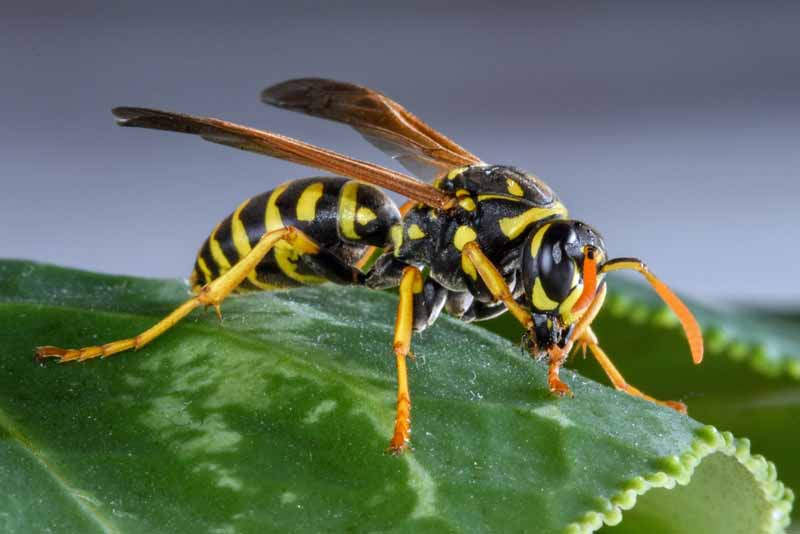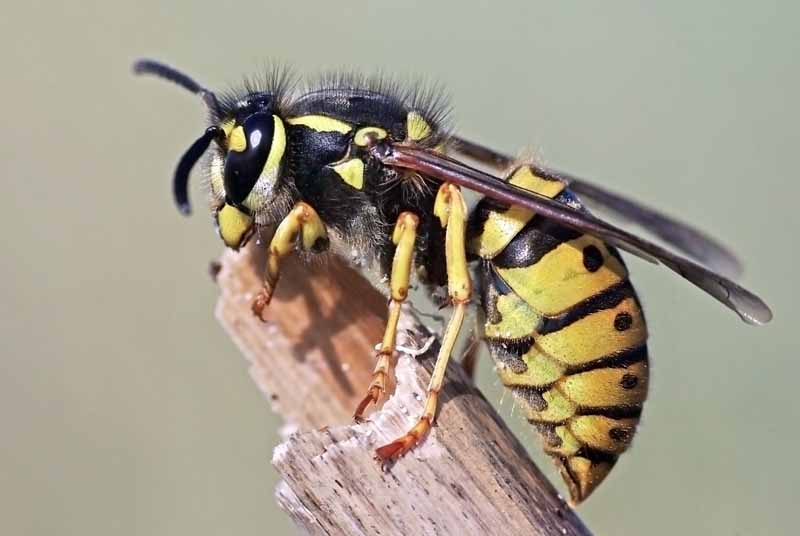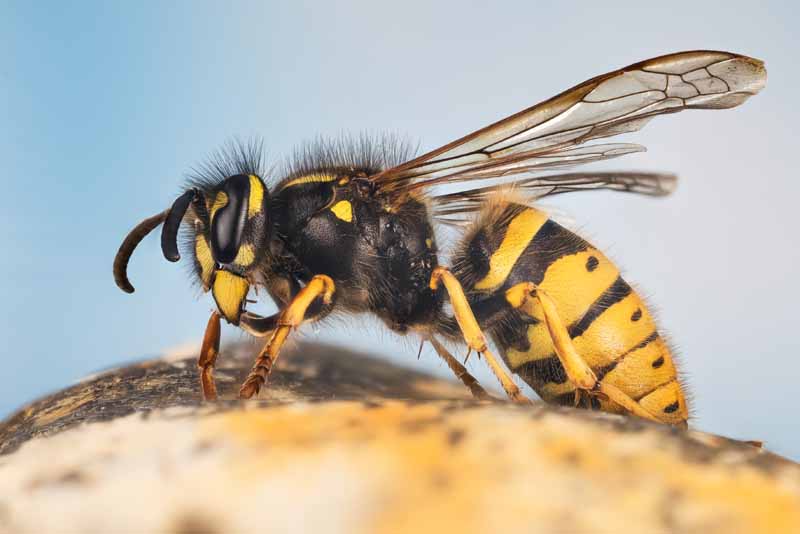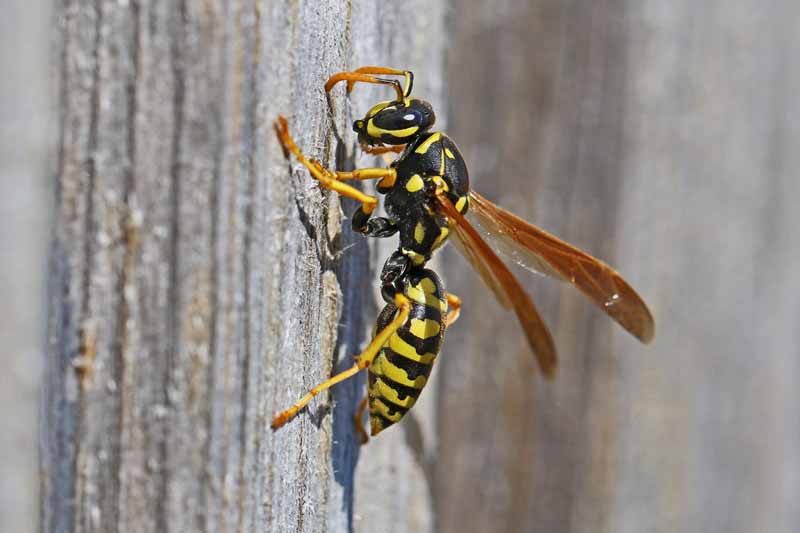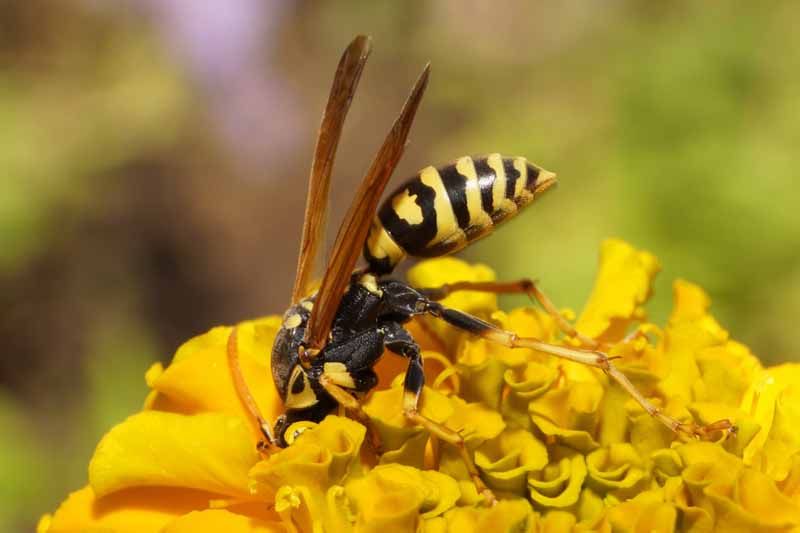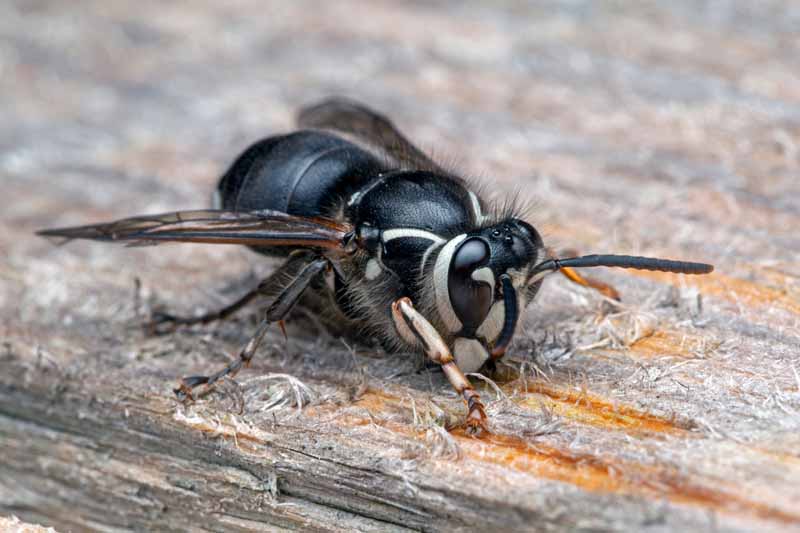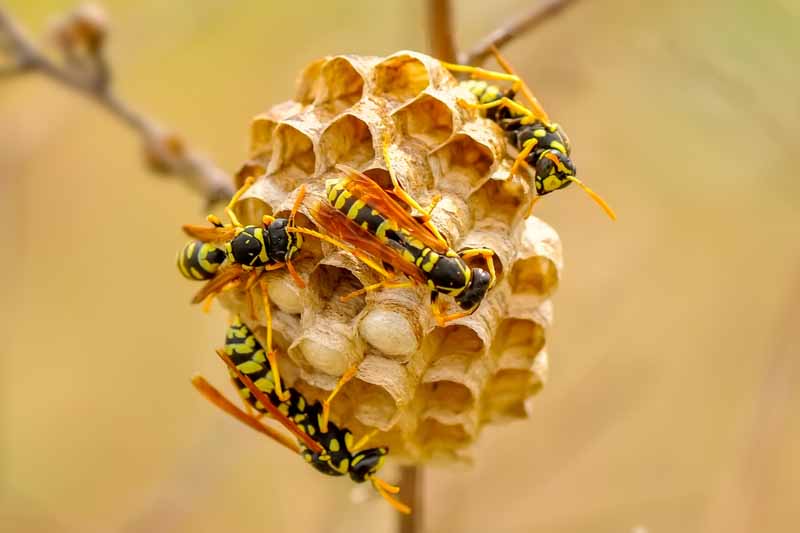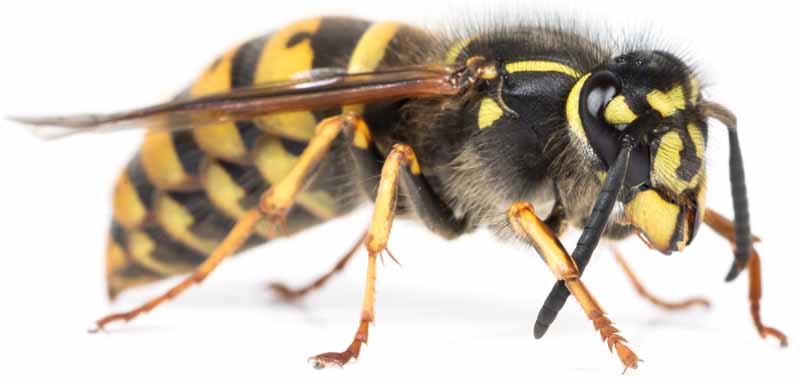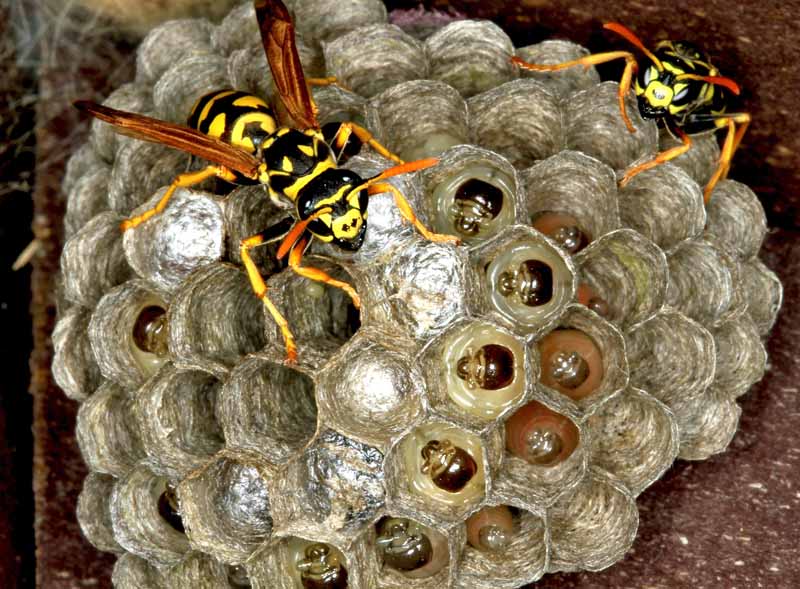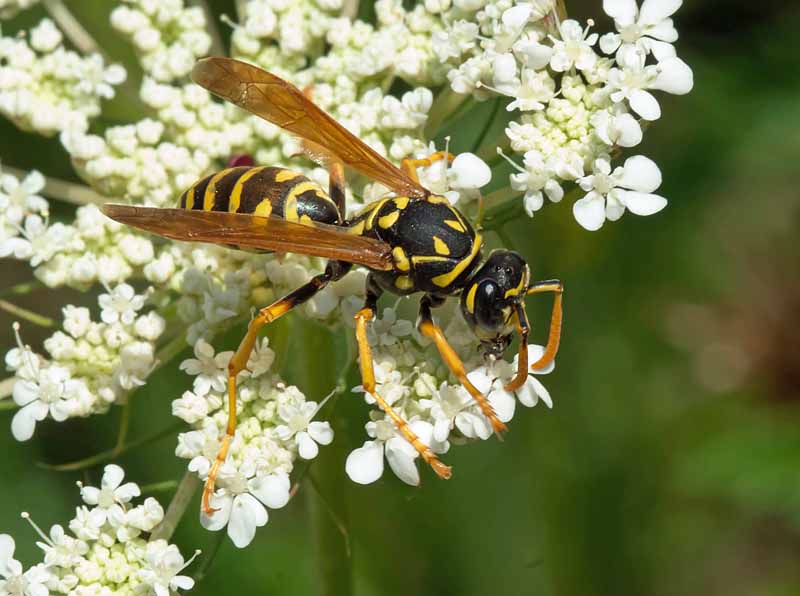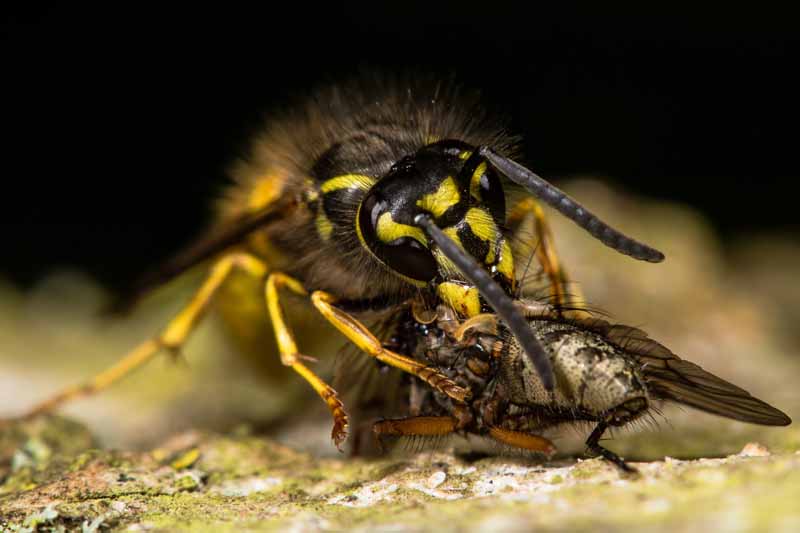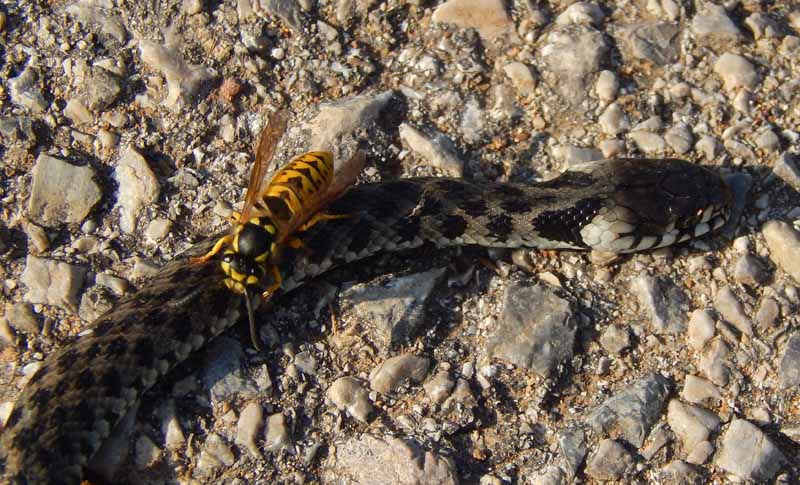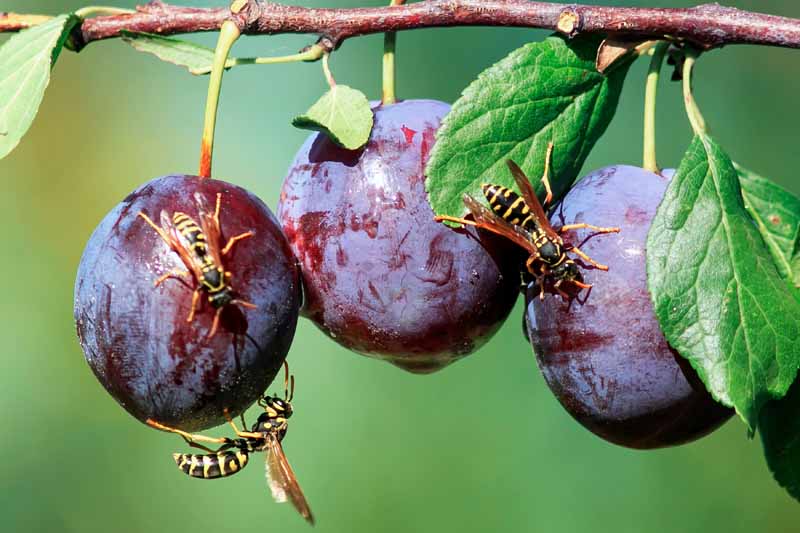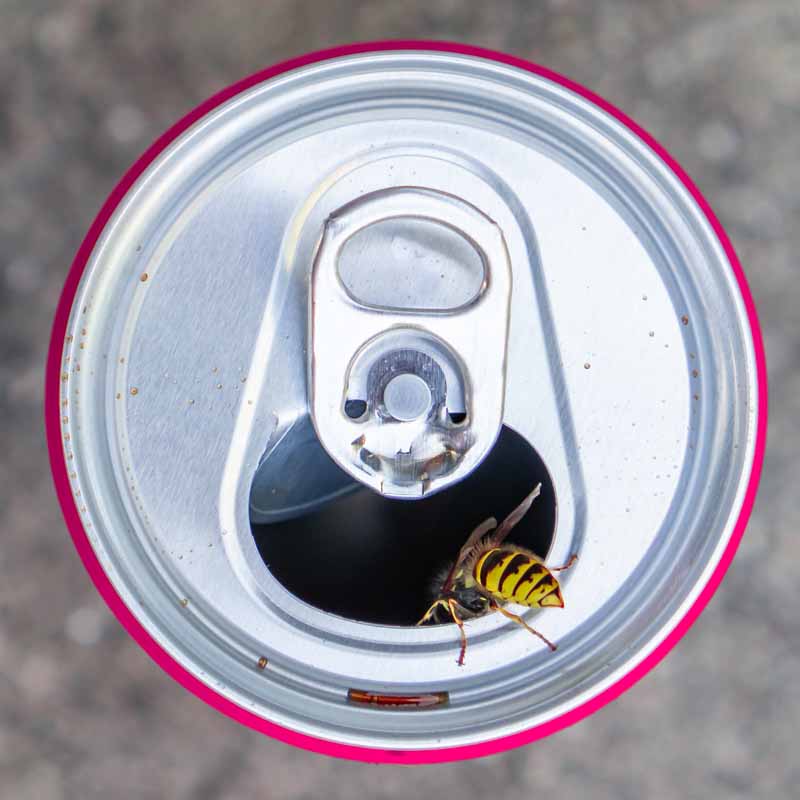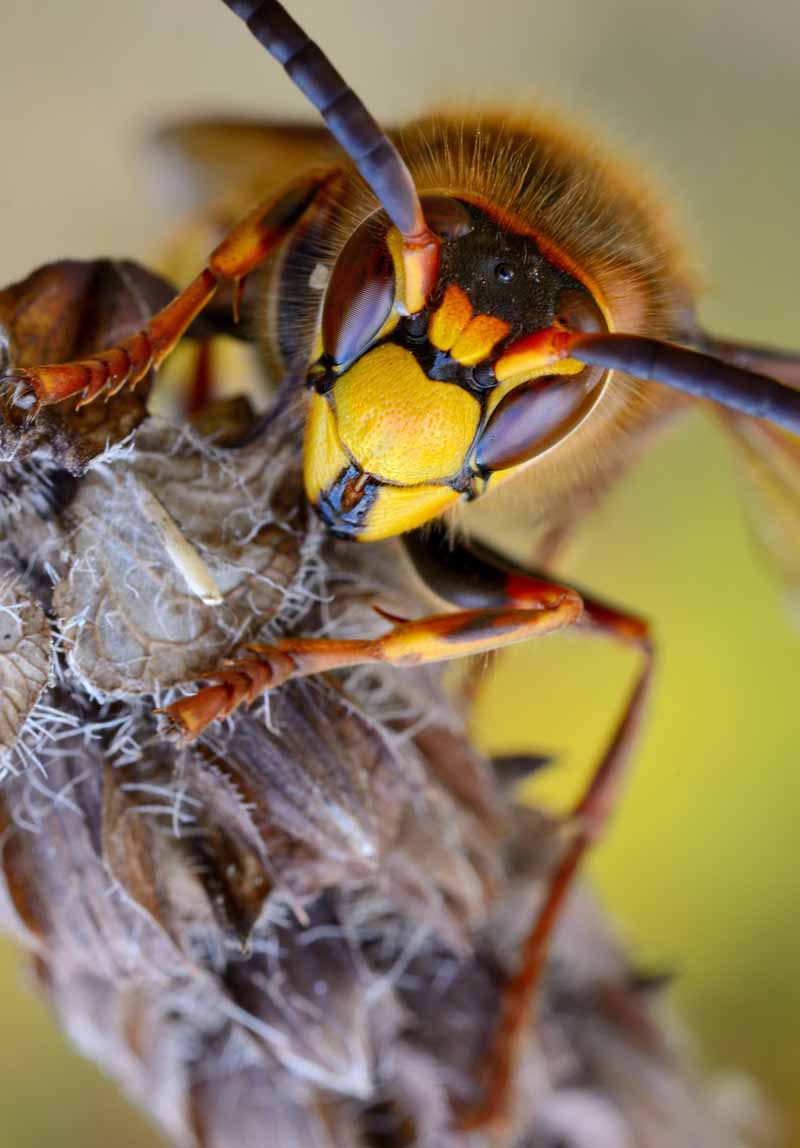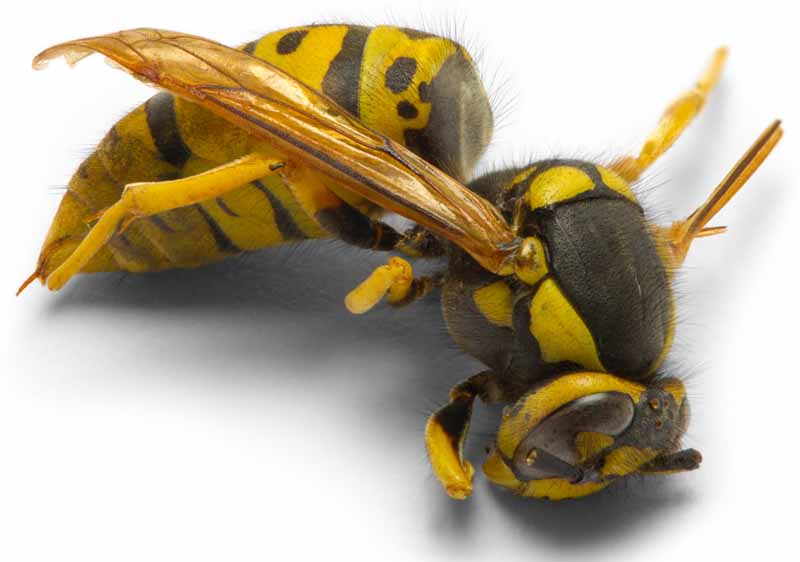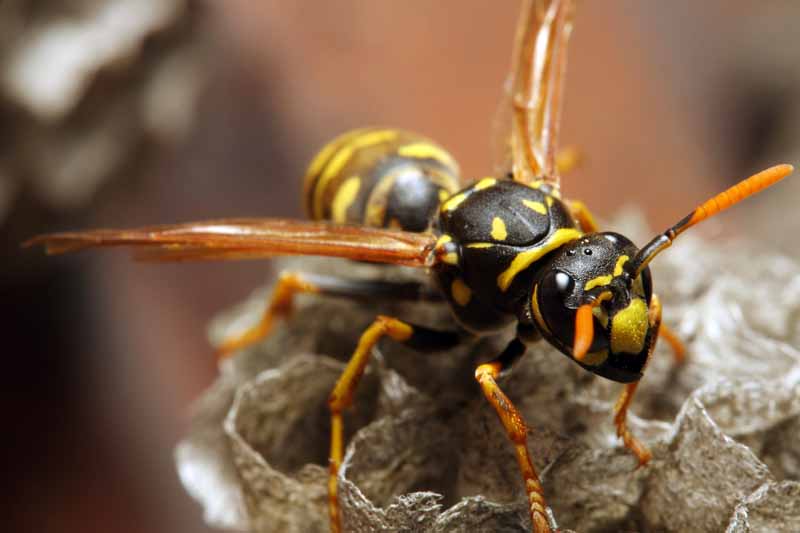The dog days of summer…fresh water melon, ice cream, picnics, barbecue, festivals…and yes, yellowjackets. Yellowjackets are exceptionally troublesome wasps. They can become highly aggressive, especially when the available food is getting low later in the season when their colonies are getting larger. While it can be annoying when wasps hover around soda cans at picnics and barbecues, these insects can be downright dangerous: they are responsible for most of the stinging deaths in the US. We link to vendors to help you find relevant products. If you buy from one of our links, we may earn a commission. Yellowjackets do have their uses – they prey on a large number of insects – including many that are damaging to agriculture. However, their tendency to bite and sting generally makes them unwelcome residents of a yard or, perish the thought, a house! In this article, we will discuss the different species and approaches you can take to minimize the harm they could cause you.
Types of Yellowjackets
There are two genera of yellowjackets – Vespula and Dolichovespula – both in the family Vespidae, a huge family that primarily includes social wasps that live in colonies. And within those genera, there are multiple species, some of the most common (to North America and Europe) being: The western yellowjacket, Vespula pennsylvanica, is the most common type in the western US. It nests in the ground, and is sometimes referred to as the “meat bee.” The eastern yellowjacket, Vespula maculiforna, is its counterpart on the East Coast of North America and can have nests underground or in cavities such as hollows in trees. The German yellowjacket, Vespula germanica, is more of an urban wasp and frequently nests in houses! It only appeared in the US in 1975, but it has overtaken the eastern species as the dominant type in many parts of the country. In contrast, Vespula vulgaris, or the common wasp, nests in rotten tree stumps at higher elevations. Species of Dolichovespula nest in trees. In the southeastern part of the US, the colony sizes of the ground nesting southern yellowjacket (Vespula squamosa) can reach as many as 100,000 adult wasps due to their ability to persist through the winter.
Identification, Life Cycle, and Biology
All of the yellowjackets share common characteristics that distinguish them from bees. They are medium sized and black with yellow stripes, with the exception of D. maculate. Due to its atypical black and white coloration, D. maculate is actually known as the bald-faced hornet. A critical difference is that all of these wasps have very tiny waists, where bees do not. They are also not hairy, and they don’t have flattened hind legs to carry pollen like bees do. Typically, the workers are about half an inch long, while the queens are about three-quarters of an inch long. The queens have compounds that act as a kind of antifreeze in their blood, which enables them to survive the cold temperatures that kill the rest of the colony. The queen emerges from hibernation in late winter to start a new colony. She creates a nest by chewing wood fiber into a pulp that is similar to paper. The queen then lays a relatively small number of eggs that become larvae after they hatch. These larvae are the first batch of workers. These workers perform all of the functions for the nest except for laying eggs.
Colony Behavior Varies Throughout the Summer
The colonies grow rapidly between spring and midsummer. The larvae need a lot of protein, and the workers typically forage for other insects. However, by the end of the summer, the colonies need a lot of sugar. While some types of yellowjackets only collect live prey, others – especially certain Vespula species, including the eastern yellowjacket and V. flavopilosa and V. vulgaris – are often scavengers. These scavengers are frequently the species that are pests at picnics and other outdoor activities that have food or soda cans present. Late summer is also the time of year that the hive produces new queens and males. The old queen dies, but the newly fertilized one will overwinter in a sheltered site such as under bark. Typically, there is only one colony. However, the colonies can overwinter and become quite large in areas where it is warm. This was the case in Alabama in 2006 and happened again in 2019.
Agricultural Uses of Yellowjackets
Believe it or not, there is something good about these widely hated wasps. Colonies eat tremendous amounts of insects during the initial part of their life cycle. For example, they are predators of agricultural pests such as armyworms and corn earworms. However, these wasps can do extensive damage to fruit. This can result in major losses in commercial orchards, but these wasps will also attack the fruit growing in home gardens. Tomatoes, pears, apples, stone fruits, and grapes are popular targets for these pesky insects.
Injuries from the Stings
While all types sting when provoked, the German variety is exceptionally aggressive and will pursue anything or anyone disturbing their nests. While one person might find a sting to be merely a painful annoyance, others are sensitive to the venom and can become ill. More frequent stings may result in greater sensitivity to the venom. Be very careful about drinking from a soda can that could have a yellowjacket inside because stings inside the mouth can be life threatening. The tendency of these wasps to sting in large numbers can make these stings a very serious matter. As mentioned, most of the deaths from stings in the US are due to yellowjackets, and most fatalities occur within an hour of being stung. A large number of stings can introduce a lot of foreign protein into a person’s body and also cause tissue damage because of destructive enzymes contained in the venom. If you have a strong allergic reaction after being stung, you should seek medical help immediately. Symptoms include hives, extensive swelling, dizziness, wheezing, or difficulty swallowing.
How to Minimize the Numbers of Yellowjackets in Your Yard
Some people are avid about destroying the nest during the wasps’ active season. Dousing them with gasoline or a hose is not a good idea and is a way to get stung multiple times.
Avoidance is Your Best Bet
Now that you are aware of how serious their stings can be, hopefully you want to minimize your exposure to these insects.
You should be wary of small patches of ground with no vegetation, as these areas can harbor underground nests. However, when foraging, yellowjackets are away from their nests, and they are much less aggressive and usually won’t sting unless you provoke them. Stay calm and collected and do not swat at the insect.
Lure Traps
While spraying the nests can range from intimidating to downright dangerous, there are some types of traps you can set up to catch these wasps and put them out of commission. You can add other lures to the trap to help it attract other varieties. Lure traps are the easiest types to use and can be purchased at many retail stores or online. These kinds of traps will reduce the number of foraging insects but won’t control large numbers of yellowjackets. The most common type of lure is heptyl butyrate, but this chemical primarily attracts the western yellowjacket and not the other species. For example, adding meat like chicken will help the trap attract the German yellowjacket and V. vulgaris. You should frequently replace the meat, since these insects don’t like rotting meat. University of Tennessee Agricultural Extension Service experts Drs. Karen M. Vail and John A. Skinner recommend using fruit juice or jelly to attract them. Also, check the lures periodically to make sure they are still working and follow the manufacturer’s recommendations about replacing them. If you are using a lure trap in your backyard, put it along the edge of the property and as far away as you can from areas like your patio! They will typically travel up to a quarter of a mile for food.
Water Traps
You can make this kind of trap yourself using a five-gallon bucket, protein bait – such as ham, fish, turkey, or liver – and a piece of string. You should fill the bucket with soapy water, and use a piece of string to hang the protein bait a couple of inches above the water. Be sure and put a wide-mesh screen over it, so the insects can get in, but animals won’t abscond with the meat. After the insects remove the protein, they fly down into the soapy water and drown. This type of trap will catch some foragers, although not huge amounts of them. However, it can be very useful for catching the queen in the late winter or early spring.
Sanitation
This low-tech technique can go a long way toward reducing the threat of marauding wasps and hornets of all sorts. Keep your food outside covered until you need it. Clean up spills promptly. Put tight-fitting, self-closing lids on your trashcans. Put a plastic liner in your can and empty and clean it often.
Repellants
While mosquito repellant won’t do you any good, you can make your own yellowjacket repellant out of water and ammonia. Add about six ounces of ammonia to a gallon of water. Then sponge it onto eating areas and treat the trashcans with it as well. This solution will help mask the odors of the food and should result in lower populations of these unwelcome visitors.
Destruction of the Nests
Insecticidal Dust
Outsource to Professionals
These stinging insects are notoriously defensive when protecting their nest.
While there are strong aerosol products that you can use, and even ones that claim to freeze the wasps, these pests may still try to attack you. Even if you wait and come back the next day, you may be faced with “partially intoxicated, agitated wasps” some distance from the nest. If you do go this route, wear heavy protective clothing like those of beekeepers, including gloves and a veil over your face. Be careful not to shine your flashlight into the nest, so you won’t provoke the wasps. You can protect yourself by putting red cellophane or acetate over the lens. That type of light doesn’t agitate the yellowjackets as much. And consider putting your flashlight on the ground.
If you don’t have a duster, you can fill an empty detergent bottle half full and use that. Put a few pebbles at the bottom to prevent the dust from caking. The formulations endiocarb (Ficam®), or pyrethrins and silica gel (Drione®) have been found to be effective. If there is more than one opening, you should seal the other ones before you start your assault. And then seal the opening once you have applied the insecticide! This might be a prudent time to hire a pest professional to have them do the job for you. In some parts of California, personnel from your local mosquito and vector control district can take care of the nests for you. And if you encounter one of those super nests that can contain 15,000 or more wasps, you will absolutely want to seek help from professional pest control experts.
Kill the Queen Before She Creates More Workers
Just like chess, you want to capture the queen. Only this is no game, and you want to kill her! The best time to do this is when she emerges in the spring to find a new place to nest. Once she starts laying eggs, it will take a month for them to hatch, so you have ample time to strike. Potential nest sites include:
Rodent burrows that are uninhabited Dense shrubs Clustered tree branches Garages Sheds Houses: Attics Behind wall siding Under eaves or porches In hollow floors and walls
You should take a three-step approach to identify the site of the new nest:
Yellowjackets Can be Too Much of a Good Thing
At least in the beginning of the season, these omnivorous insects help farmers by eating large quantities of agricultural pests. However, their tendency to sting repeatedly in large numbers makes them very unwelcome guests in most home gardens and backyards.
You can use lures in your yard to trap some of the foraging insects. Spraying nests can be fraught with danger but tracking down the queen in the spring before she has created a new colony is the perfect time to eliminate her and the potential colony. The rise of super nests, such as those appearing in Alabama at the time of this writing, are alarming harbingers of what can happen as the climate warms. Seek professional pest control help if you encounter one of these monstrosities. And if you found value in this guide, be sure to check out some of our other pest guides next:
How to Rid Your Garden of Cockroaches How to Stop Carpenter Bees from Attacking Your Home How to Battle Colorado Potato Beetles in Your Garden
© Ask the Experts, LLC. ALL RIGHTS RESERVED. See our TOS for more details. Product photo via Ortho, Resecue, and MGK. Uncredited photos: Shutterstock.
